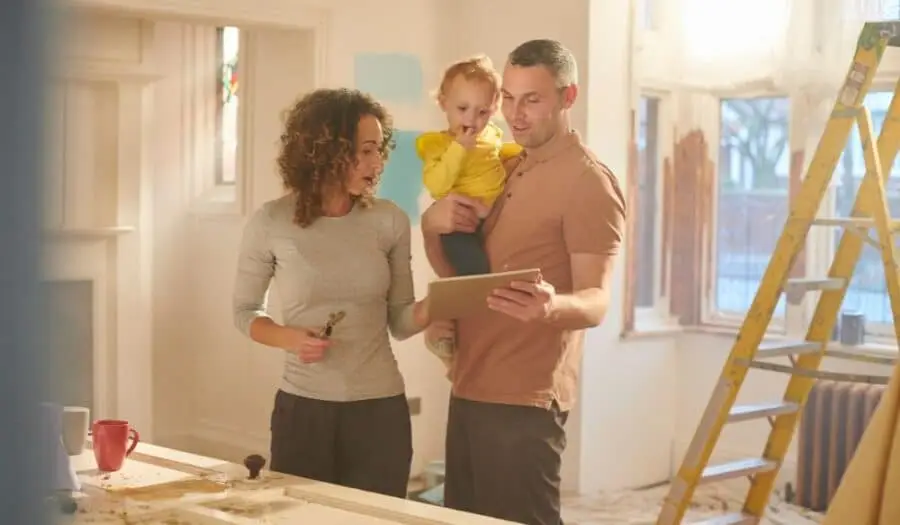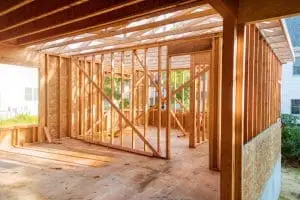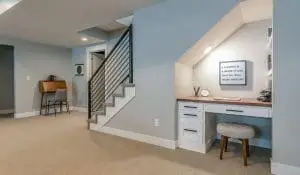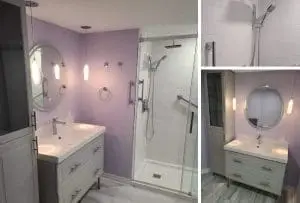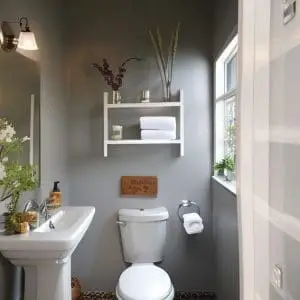Many families in Canada are choosing to live together across generations. This trend, called multi-generational living, is driven by both necessity (like shared expenses) and a desire for closer family bonds. To help Canadians with the expenses of creating a suitable living space for extended family, the government introduced the Multigenerational Home Renovation Tax Credit (MHRTC) in 2023. This credit can offset the cost of renovations to create a secondary suite within your home for a qualifying relative.
While there are benefits like emotional support and childcare, there are challenges too, such as privacy and space. Recognizing this, the Canadian government introduced the Multi-Generational Home Renovation Tax Credit in 2023.
Qualifying for the Tax Credit
This credit helps offset the cost of renovating your home to accommodate multiple generations. Here’s how to qualify:
- Who lives there? The renovation must be for a relative aged 65 or older, or someone with a disability. This can include grandparents, parents, children, aunts, uncles, or nephews. Talk to your family member about their specific needs, like mobility issues.
- What kind of renovation? You need to create a separate suite with its own entrance, bedroom, bathroom, and kitchen. Think of it as a mini-apartment within your home. Consider consulting an architect or designer specializing in accessible living.
- When will they move in? The suite must be occupied within a year of completion. Work with your contractor to ensure a realistic timeline.
- What can you claim? Eligible expenses include construction costs (walls, doors, layout changes) and accessibility features (ramps, grab bars, wider doorways). Keep receipts for everything – appliances, purely cosmetic upgrades, and housekeeping are not covered.
- Do you own or rent? You must be the homeowner or a long-term tenant with permission to renovate. If renting, get written approval from your landlord and discuss how increased property value will be handled.
- Who’s doing the work? Hire licensed and insured contractors with experience in multi-generational renovations or accessible design. Check references and past projects.
- Keep it documented! Detailed receipts and records are essential for your application. Use digital tools to track expenses and store receipts securely.
Applying for the Tax Credit
Once you’re sure you meet the requirements, gather your documents: proof of ownership/tenancy, renovation plans, contractor quotes, and all receipts. The application process typically involves a form (online or paper) submitted with your documents to the relevant government department. Meet deadlines and double-check your application for accuracy. Upon approval, you’ll receive instructions on claiming the credit (rebate, tax reduction, etc.).
At RenosGroup.ca, we believe that home is more than just a physical space—it’s where memories are made, bonds are strengthened, and generations come together.
What is the Multigenerational Home Renovation Tax Credit (MHRTC)?
The MHRTC is a refundable tax credit that offers financial relief for Canadians who renovate their existing homes to create a self-contained secondary unit. This secondary unit is intended to house a qualifying relative, specifically:
- A senior family member aged 65 or older by the end of the renovation period taxation year.
- An adult family member (at least 18 years old by the end of the renovation period taxation year) who qualifies for the disability tax credit.
The credit helps offset the costs associated with creating this secondary unit, making multigenerational living arrangements more accessible.
Eligibility for the MHRTC
Claiming the MHRTC involves three key aspects:
- Qualifying Individual: This refers to the person who will reside in the secondary unit. They must be a:
- Senior family member aged 65 or older by the end of the renovation period taxation year.
- Adult family member (at least 18 years old by the end of the renovation period taxation year) who qualifies for the disability tax credit.
- Qualifying Relative: You, the person renovating your home, must be a qualifying relative to the individual residing in the secondary unit. This means you have a close blood relationship, such as a parent, grandparent, child, grandchild, aunt, uncle, niece, or nephew.
- Qualifying Renovation: The renovations must create a self-contained secondary unit within your existing home. This unit needs to meet specific requirements outlined below.
Secondary Unit Requirements:
- Separate Entrance: The secondary unit should have its own private entrance, allowing for independent access for the resident.
- Kitchen and Bathroom Facilities: The unit must be equipped with a complete kitchen and bathroom, fostering independent living for the qualifying individual.
How is the MHRTC Calculated?
“The MHRTC is a refundable tax credit, meaning you can receive the credit amount even if you don’t owe any taxes. Here’s how it works:
- Tax Rate: The credit is calculated by multiplying the lowest personal income tax rate in Canada (15%) by a specific amount.
- Lesser of Two Values: This specific amount is the lesser of two values:
- $50,000: This is the maximum qualifying expense limit.
- Total Qualifying Expenditures: This is the actual amount you spent on eligible renovations that meet the MHRTC criteria.
- Example: Let’s say your qualifying expenditures for the renovation totaled $50,000 (the maximum). In this case, the credit amount would be:
- MHRTC = 15% x $50,000 = $7,500
However, if your qualifying expenditures were only $30,000, the calculation would be:
* MHRTC = 15% x $30,000 = **$4,500**" Source: MHRTC Official WebsiteAdditional Points:
- You cannot claim any credit if the qualifying individual wasn’t a resident of Canada throughout the taxation year.”
- Only one qualifying renovation can be claimed per qualifying individual in their lifetime.
Remember, this tax credit aims to support multigenerational living arrangements, benefiting seniors, individuals with disabilities, and their families. 🏠💙
For more details, you can visit the official Canada Revenue Agency page. Feel free to contact RenosGroup.ca at 613-727-9427 for a free in-home consultation on your next renovation in Ottawa.
Previous article on same topic:
Many families in Canada are choosing to live together across generations. This trend, called multi-generational living, is driven by both necessity (like shared expenses) and a desire for closer family bonds. To help Canadians with the expenses of creating a suitable living space for extended family, the government introduced the Multigenerational Home Renovation Tax Credit (MHRTC) in 2023. This credit can offset the cost of renovations to create a secondary suite within your home for a qualifying relative.
While there are benefits like emotional support and childcare, there are challenges too, such as privacy and space. Recognizing this, the Canadian government introduced the Multi-Generational Home Renovation Tax Credit in 2023.
Qualifying for the Tax Credit
This credit helps offset the cost of renovating your home to accommodate multiple generations. Here’s how to qualify:
- Who lives there? The renovation must be for a relative aged 65 or older, or someone with a disability. This can include grandparents, parents, children, aunts, uncles, or nephews. Talk to your family member about their specific needs, like mobility issues.
- What kind of renovation? You need to create a separate suite with its own entrance, bedroom, bathroom, and kitchen. Think of it as a mini-apartment within your home. Consider consulting an architect or designer specializing in accessible living.
- When will they move in? The suite must be occupied within a year of completion. Work with your contractor to ensure a realistic timeline.
- What can you claim? Eligible expenses include construction costs (walls, doors, layout changes) and accessibility features (ramps, grab bars, wider doorways). Keep receipts for everything – appliances, purely cosmetic upgrades, and housekeeping are not covered.
- Do you own or rent? You must be the homeowner or a long-term tenant with permission to renovate. If renting, get written approval from your landlord and discuss how increased property value will be handled.
- Who’s doing the work? Hire licensed and insured contractors with experience in multi-generational renovations or accessible design. Check references and past projects.
- Keep it documented! Detailed receipts and records are essential for your application. Use digital tools to track expenses and store receipts securely.
Applying for the Tax Credit
Once you’re sure you meet the requirements, gather your documents: proof of ownership/tenancy, renovation plans, contractor quotes, and all receipts. The application process typically involves a form (online or paper) submitted with your documents to the relevant government department. Meet deadlines and double-check your application for accuracy. Upon approval, you’ll receive instructions on claiming the credit (rebate, tax reduction, etc.).
At RenosGroup.ca, we believe that home is more than just a physical space—it’s where memories are made, bonds are strengthened, and generations come together.
What is the Multigenerational Home Renovation Tax Credit (MHRTC)?
The MHRTC is a refundable tax credit that offers financial relief for Canadians who renovate their existing homes to create a self-contained secondary unit. This secondary unit is intended to house a qualifying relative, specifically:
- A senior family member aged 65 or older by the end of the renovation period taxation year.
- An adult family member (at least 18 years old by the end of the renovation period taxation year) who qualifies for the disability tax credit.
The credit helps offset the costs associated with creating this secondary unit, making multigenerational living arrangements more accessible.
Eligibility for the MHRTC
Claiming the MHRTC involves three key aspects:
- Qualifying Individual: This refers to the person who will reside in the secondary unit. They must be a:
- Senior family member aged 65 or older by the end of the renovation period taxation year.
- Adult family member (at least 18 years old by the end of the renovation period taxation year) who qualifies for the disability tax credit.
- Qualifying Relative: You, the person renovating your home, must be a qualifying relative to the individual residing in the secondary unit. This means you have a close blood relationship, such as a parent, grandparent, child, grandchild, aunt, uncle, niece, or nephew.
- Qualifying Renovation: The renovations must create a self-contained secondary unit within your existing home. This unit needs to meet specific requirements outlined below.
Secondary Unit Requirements:
- Separate Entrance: The secondary unit should have its own private entrance, allowing for independent access for the resident.
- Kitchen and Bathroom Facilities: The unit must be equipped with a complete kitchen and bathroom, fostering independent living for the qualifying individual.
How is the MHRTC Calculated?
“The MHRTC is a refundable tax credit, meaning you can receive the credit amount even if you don’t owe any taxes. Here’s how it works:
- Tax Rate: The credit is calculated by multiplying the lowest personal income tax rate in Canada (15%) by a specific amount.
- Lesser of Two Values: This specific amount is the lesser of two values:
- $50,000: This is the maximum qualifying expense limit.
- Total Qualifying Expenditures: This is the actual amount you spent on eligible renovations that meet the MHRTC criteria.
- Example: Let’s say your qualifying expenditures for the renovation totaled $50,000 (the maximum). In this case, the credit amount would be:
- MHRTC = 15% x $50,000 = $7,500
However, if your qualifying expenditures were only $30,000, the calculation would be:
* MHRTC = 15% x $30,000 = **$4,500**" Source: MHRTC Official WebsiteAdditional Points:
- You cannot claim any credit if the qualifying individual wasn’t a resident of Canada throughout the taxation year.”
- Only one qualifying renovation can be claimed per qualifying individual in their lifetime.
Remember, this tax credit aims to support multigenerational living arrangements, benefiting seniors, individuals with disabilities, and their families. 🏠💙
For more details, you can visit the official Canada Revenue Agency page. Feel free to contact RenosGroup.ca at 613-727-9427 for a free in-home consultation on your next renovation in Ottawa.
Previous article on same topic:
The Multigenerational Home Renovation Tax Credit (MHRT) in Ottawa is a program designed to provide financial assistance to homeowners who are looking to renovate their homes to accommodate multiple generations of family members. The program is intended to help families stay together and provide a safe and comfortable living environment for all members.
One of the main benefits of the MHRT is that it can help offset the cost of renovations. Eligible expenses include things like adding a bedroom or bathroom, building a secondary suite, or making accessibility improvements. Homeowners can claim a credit of up to 15% of the cost of the renovations, up to a maximum of $10,000. This can help make it more affordable for families to make the necessary changes to their homes.
Another benefit of the MHRT is that it encourages families to stay together, which can have a positive impact on both the individual family members and the wider community. By allowing multiple generations of family members to live together, the program can help support older adults who may need extra assistance, while also providing a sense of community and belonging for younger members of the family.
The MHRT is also good for the Ottawa housing market, as it can help increase the supply of homes that are suitable for multigenerational living. This can help meet the growing demand for such homes, and can also help increase property values in the city.
However, the MHRT has some limitations. The credit is only available to primary residences, and it can only be claimed by the homeowner. Additionally, the renovations must be completed within one year of the application being submitted, and homeowners must also have a valid building permit.
In conclusion, the Multigenerational Home Renovation Tax Credit in Ottawa is a program that can help families stay together by making it more affordable for them to renovate their homes to accommodate multiple generations. It can also have a positive impact on the housing market and wider community. However, it does have some limitations and eligibility requirements that need to be met. Feel free to contact us or call us at 613-727-9427 for a free in-home consultation on your next renovation in Ottawa.

